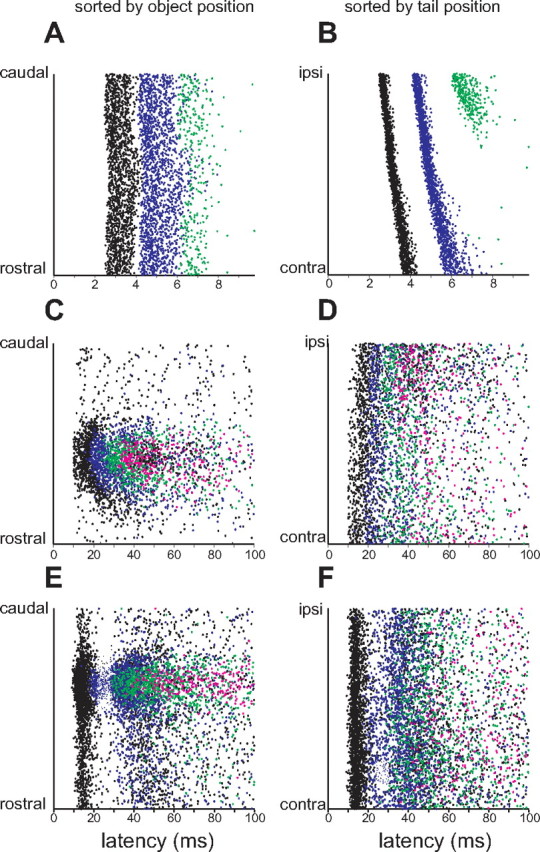Figure 3.

Effects of simultaneous movement of object and tail on neural responses across processing stages. Rasters in the left column are sorted by position of the object alone and rasters in the right column by the position of the tail alone. Colors indicate the first (black), second (blue), third (green), and subsequent (pink) spikes that occurred after the EOD. A, B, Responses of an electroreceptor afferent to simultaneous movements of the tail and a 2 mm diameter plastic cylinder placed 5 mm lateral to the fish. Note the strong dependence on tail position in B and the much weaker dependence on object position in A. C, D, Responses of an E-cell to simultaneous movements of the tail and a 2 mm diameter metal cylinder placed 5 mm lateral to the fish. Note a clear dependence of the response on object position and a much weaker dependence on tail position. E, F, Responses of an I-cell to simultaneous movements of the tail and a 2 mm diameter plastic cylinder placed 5 mm lateral to the fish. Again, note a clear dependence of the response on object position and a much weaker dependence on tail position.
